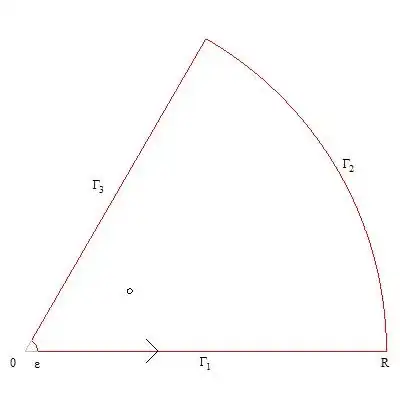Hint:
Consider the following contour with $\Gamma=\Gamma_1\cup\Gamma_2\cup\Gamma_3$ and an angle of $\pi/8$.

It is trivial to show that
$$\lim_{R\to\infty}\int_{\Gamma_2}\frac{\ln(z)}{1-z^8}~\mathrm dz=0$$
$$\lim_{(e,R)\to(0^+,\infty)}\int_{\Gamma_1}\frac{\ln(z)}{1-z^8}~\mathrm dz=\int_0^\infty\frac{\ln(z)}{1-z^8}~\mathrm dz$$
$$\lim_{(e,R)\to(0^+,\infty)}\int_{\Gamma_3}\frac{\ln(z)}{1-z^8}~\mathrm dz=-e^{\pi i/8}\int_0^\infty\frac{\ln(z)+\frac\pi8}{1+z^8}~\mathrm dz$$
and the indent likewise tends to zero. Thus, we have
$$\int_0^\infty\frac{\ln(z)}{1-z^8}~\mathrm dz=e^{\pi i/8}\int_0^\infty\frac{\ln(z)+\frac\pi8}{1+z^8}~\mathrm dz+\oint_\Gamma\frac{\ln(z)}{1-z^8}~\mathrm dz$$
The right integral may then be dealt with using the residue theorem.
Now consider $f(z)=\frac{[\ln(z)]^2}{1+z^8}$ and the keyhole contour with $C=C_1\cup C_2\cup C_3\cup C_4$ and $r,R$ being the inner radius and outer radius respectively.

We then have:
$$\lim_{(r,R)\to(0^+,\infty)}\int_{C_2}f(z)~\mathrm dz=\lim_{(r,R)\to(0^+,\infty)}\int_{C_4}f(z)~\mathrm dz=0$$
$$\lim_{(r,R)\to(0^+,\infty)}\int_{C_1}f(z)~\mathrm dz=\int_0^\infty\frac{[\ln(z)]^2}{1+z^8}~\mathrm dz$$
$$\lim_{(r,R)\to(0^+,\infty)}\int_{C_3}f(z)~\mathrm dz=-\int_0^\infty\frac{[\ln(z)+2\pi i]^2}{1+z^8}~\mathrm dz$$
Adding these together, we find that
$$\begin{align}\lim_{(r,R)\to(0^+,\infty)}\oint_Cf(z)~\mathrm dz&=\int_0^\infty\frac{[\ln(z)]^2-[\ln(z)+2\pi i]^2}{1+z^8}~\mathrm dz\\&=\int_0^\infty\frac{-4\pi i\ln(z)+4\pi^2}{1+z^8}~\mathrm dz\end{align}$$
Thus,
$$\int_0^\infty\frac{\ln(z)}{1+z^8}~\mathrm dz=-\frac1{4\pi}\Im\left[\lim_{(r,R)\to(0^+,\infty)}\oint_Cf(z)~\mathrm dz\right]$$
$$\int_0^\infty\frac1{1+z^8}~\mathrm dz=\frac1{4\pi^2}\Re\left[\lim_{(r,R)\to(0^+,\infty)}\oint_Cf(z)~\mathrm dz\right]$$
Now apply residue theorem and you are done!

